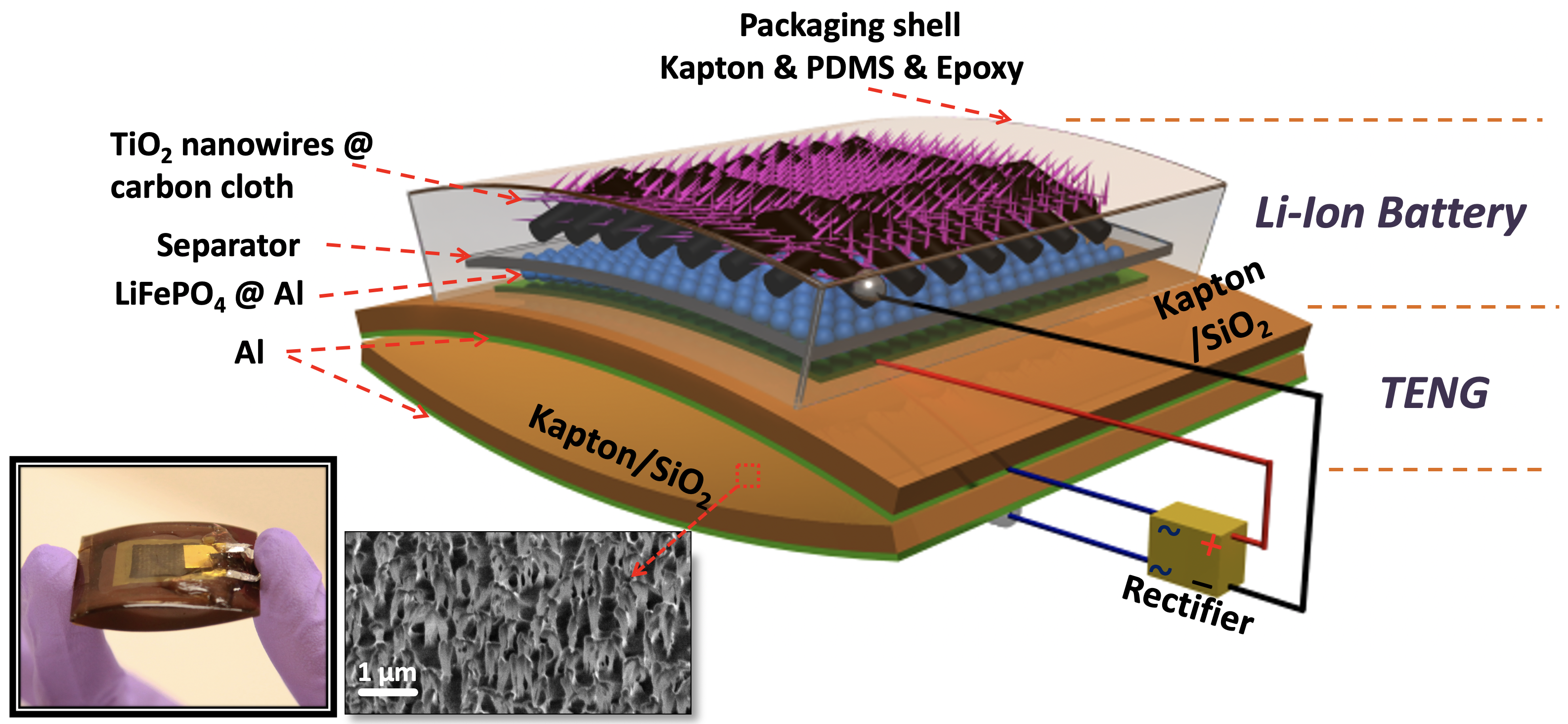This innovation revolutionizes the traditional role of a battery as an energy storage unit by transforming it into a power regulator. By combining triboelectric nanogenerator (TENG) technology that gleans energy from mechanical movement with the highly efficient storing power of a lithium-ion (Li-ion) battery, researchers at Georgia Tech have designed a novel self-charging power unit. In the presence of ongoing mechanical motion, the TENG and Li-ion battery work in concert—thanks to the novel design of the arched TENG piece and the battery’s flexible material—to simultaneously harvest and store mechanical energy.
This technology works with a wide variety of mechanical motion sources, ranging from the ocean’s ebb and flow to pedestrian foot traffic at a crosswalk. Once the ongoing electrostatic induction is captured by the unit’s TENG energy conversion component, the Li-ion battery then stores the generated and rectified alternating current (AC). The device could then provide a continuous direct current (DC) to the external load simultaneously. The power unit, with the application of continuous mechanical motion, has been shown to supply 2 µA of direct current with a stable 1.55 V for more than 10 hours without fading. This could enable large volume harvesting or miniaturization for individual use.
This power unit overcomes the traditional battery’s most well-known problem: supply limitation. Due to its potential for infinite self-powered capability, Georgia Tech’s innovation can also eliminate the significant waste of batteries and their environmentally harmful chemicals.
- Continuous: Regulates power harvested in the presence of constant mechanical motion to store excess energy while pushing a constant voltage to the external load
- Eco-friendly: Reduces the need for consumers and technology developers to utilize supply-limited traditional batteries that are thrown away after a short use and could leak harmful chemicals into the environment
- Sustainable: Eliminates the need to mine an additional power supply by harvesting energy from underutilized electrostatic induction found in naturally occurring mechanical motion
- Personal electronics
- Medical devices
- Infrastructure sensors
- Environmental design
Physical waste from batteries is a known environmental nuisance, as their potentially harmful chemicals may leak into the ground and rivers. Additionally, their limited lifetime of power supply can be frustrating to consumers since they require constant replacement with very few environmentally friendly options for disposal.
Conventionally, power sourcing has been siloed into two technologies: energy generation and energy storage. The discovery of TENG technology in 2012 introduced new possibilities for low-cost and highly efficient energy generation, but it lacks stability due to its ambient environment. Meanwhile, energy storage has had few significant improvements since the Li-ion battery became commercially available in 1991. The researchers at Georgia Tech have identified the benefit of combining TENG and Li-ion batteries to create this self-charging power unit that is sustainable, continuous, and eco-friendly.

Design of Georgia Tech’s self-charging power unit
